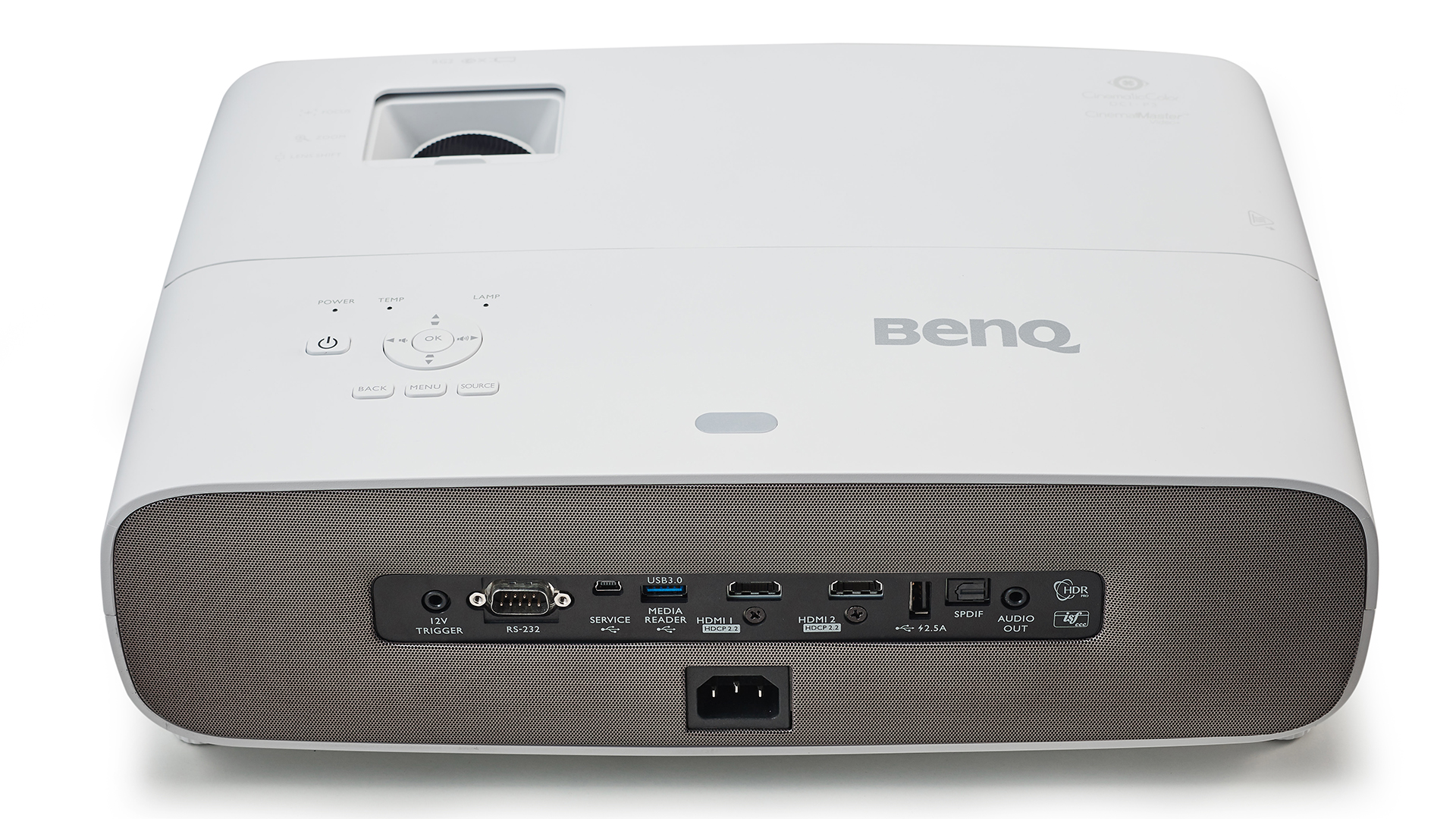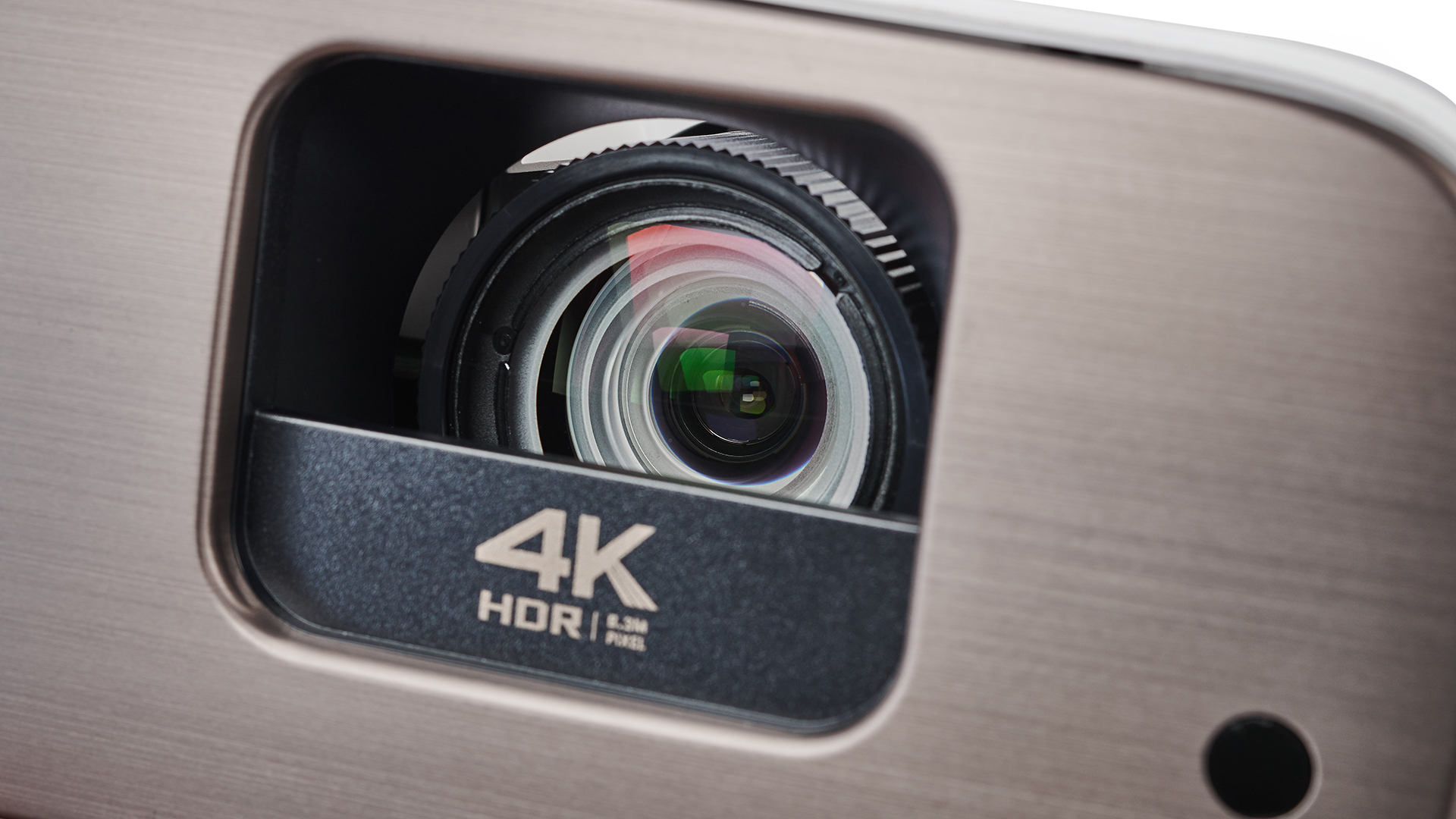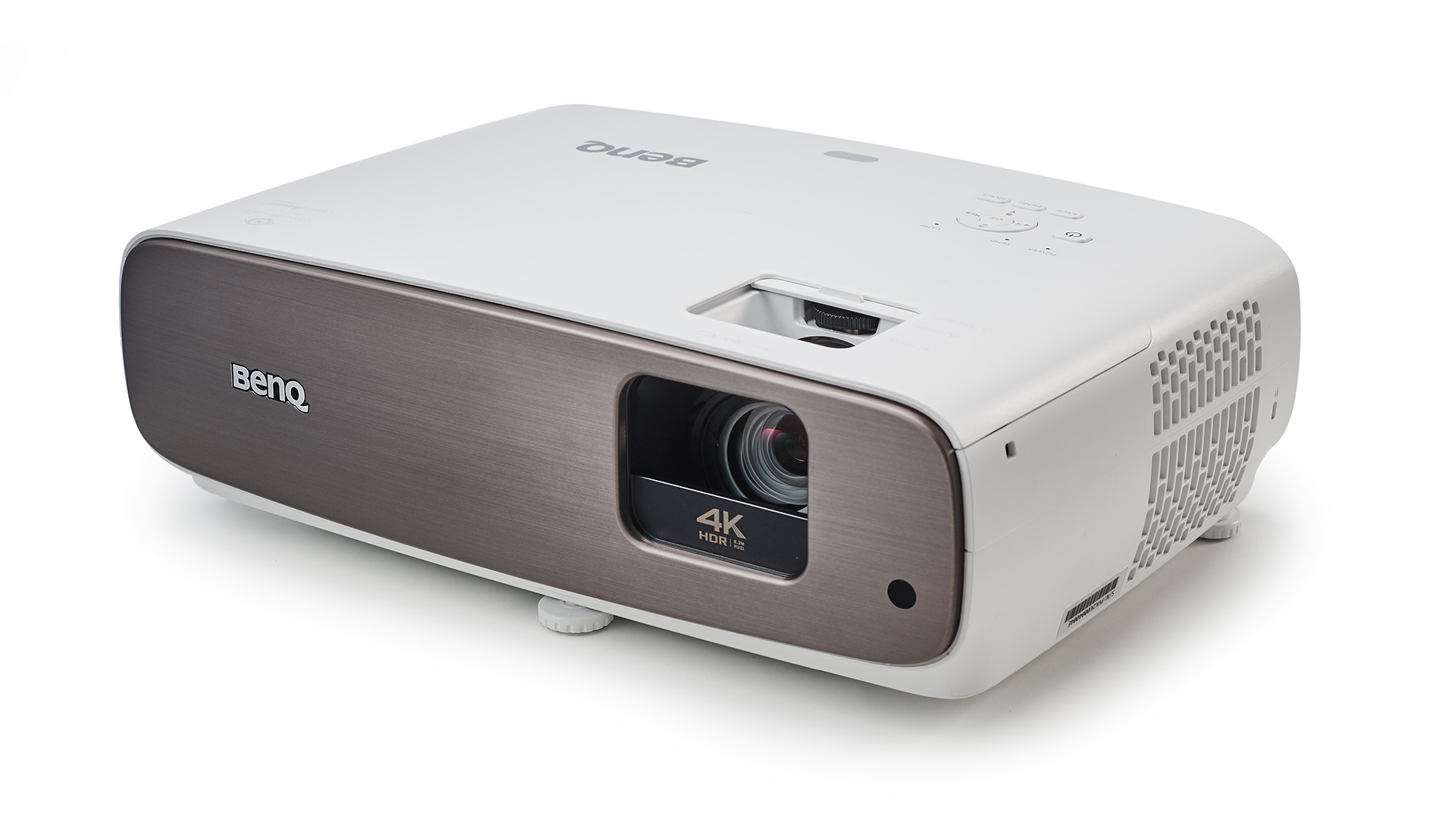What Hi-Fi? Verdict
A worthy 4K projector, but it just falls short on picture brilliance
Pros
- +
Budget-friendly 4K
- +
Flexible and portable
- +
Handles HDR content well
Cons
- -
Picture set-up is tricky
- -
Colours could be stronger
- -
A few bugs
Why you can trust What Hi-Fi?
Where HDR and 4K were once the sole preserve of high-end projectors, it’s now possible to pick up these top-notch technologies for just over a grand.
The BenQ W2700 is one such 4K HDR projector, sitting in the middle of the company’s CinePrime Series devices. Its CinematicColor technology supports DCI-P3, the US movie industry colour standard, with BenQ claiming the images produced better reflect the colours intended by the film’s director.
With a short throw lens, built-in speakers and a relatively small footprint, the BenQ W2700 is portable and flexible enough to keep in the cupboard and bring out either for movie night or a session on the games console. But priced just above the 2018, Award-winning Optoma UHD40, it’s up against some tough competition.
Build

BenQ claims the W2700 is a projector for any room, and we are inclined to agree. Weighing 4.2kg and measuring just 38cm across, its practical size means you can ceiling mount it (either upside down, for easy access to the control buttons, or the right way up) without needing anything too industrial to hold it in place.
Nor is it large enough to be an eyesore – its dimensions make it equally good on the coffee table in front of the sofa or a more dedicated platform positioned over and behind the viewer’s head.
Those placement options are increased thanks to the W2700’s relatively short throw specifications. The ten-element, 1.3x zoom lens gives a throw ratio of 1.13-1.47. So, for a 120in image, the projector is able to sit anywhere between 3.00-3.96m away from the screen.
We have no trouble setting it up, just a few minor tweaks to the three adjustable feet are required, with a turn of the manual focus and zoom settings at the lens and we’re ready to go. There’s a manual lens shift wheel that can make a 10 percent adjustment to the height of the image, but it’s not something we need.
The latest hi-fi, home cinema and tech news, reviews, buying advice and deals, direct to your inbox.
Features

There are some navigational keys on the device itself, but the BenQ remote control is excellent. It’s a good size, has a backlight and benefits from shortcut buttons to almost every function and setting you could need – a bonus given that the menus are otherwise a bit fiddly.
The motion processing controls, for example, are buried within a menu called Cinema Master, which is under the Advanced option within the Picture menu. The test pattern and keystone corrections can also be done using the remote.
There are two HDMI 2.0 sockets as well as a powered USB 3.0 port for high bitrate media reading and a separate 3.5mm audio-out jack. The two 5W speakers within the chassis of the BenQ W2700 aren’t too bad, although if you want anything approaching a proper cinematic experience you’ll need a dedicated sound system.
Picture

The picture settings of the BenQ W2700 aren’t as straightforward as the initial set-up, but it’s easy if you’re watching HDR content. With HDR set to Auto, this 2,000 lumens projector does all the work for you, automatically switching the major picture settings to optimum.
Whether we are watching the 4K vintage world of The Prestige or the starker setting of Die Hard’s Nakatomi Plaza, the W2700 has the colours, the contrast and the brightness bang on, and that’s no mean feat.
Picture detail is generally good and it’s worth noting how impressive that is given that this projector doesn’t actually have the 3840 x 2160 micro-mirrors on its DLP chip as you might expect. Instead it uses Texas Instruments’ lens shifting DLP XPR technology to effectively quadruple the number of pixels produced by its 0.47in chip, with only 1920 x 1080 micro-mirrors.
The chip is flashed at a rate of 240Hz (four times the normal amount) each time in a different position such that a full 4K, 8.3 million distinct pixels are displayed to the viewer per frame of footage.
Things start to go slightly awry for the BenQ W2700 when we start watching non-HDR films, which should still be a large portion of your viewing. You can still get a good balanced projection, but it takes a lot more work to get the best possible picture.
As a shortcut, with non-HDR, we recommend choosing the Vivid TV preset. We watch Thor in Full HD and the colour palette is well balanced. The gold of Asgard’s palace is as prominent as the green of the planet’s trees and the blues of its oceans in the opening sweeps of the film.
These colours are on the oversaturated side though, with the face of the titular hero a slightly embarrassed pink throughout. For the maximum non-HDR picture, we'd stick with Vivid TV and play with the five major picture sliders in the Picture menu. Of the other presets, Cinema comes off a little on the sepia side and Dark Cinema has better contrast but is lighter on picture detail.

Resolution 4K
HDR formats HDR10, HLG
Zoom x1.3
Max brightness 2000 ANSI lumens
Speakers 2 x 5W
Inputs 2 x HDMI 2.0, 3 x USB
Weight 4.2kg
Dimensions (hwd) 38 x 13 x 26cm
Motion processing is another area of the W2700 that can be tricky. It's inconsistent and not particularly sooth. Switching it off introduces a hint of judder but the picture does appear more stable and we feel it's the best of the three settings available.
A further unwanted issue is that using the motion processing throws the syncing of the picture and the sound out when watching in 4K. It happens more than we’d expect, even when using the projector’s internal speakers, but can be resolved by switching the motion processing off. However, most home cinema amps will have an audio delay feature that can remedy the syncing.
It is worth noting that our first review sample had a fault that left a split in brightness down the middle of the picture when we adjusted the gamma settings. This doesn’t happen with the second unit, so we don’t expect it to be an issue.
DLP projection technology is such that we weren’t expecting TV-level blacks. Sure enough, you don’t get them. Instead, it’s more about greys but, ranging from heavy charcoal to a dusty heather, there is still enough difference in tone to pick out good dark details.
The multi-layered outfits of The Prestige are clear to make out even in the dingy Victorian lighting; overcoats on jackets on waistcoats all with their own visible fabrics in fur, wool and felt. Equally, the whites of the snows and mist of Nikola Tesla’s Colorado Springs retreat are defined enough to conjure the genuine sense of trepidation as Robert Angier searches out his ultimate illusion.

With the palette balanced, this BenQ projector scores well for colour. Foliage looks lifelike with enough subtlety to pick out the right hues of yellows and reds, including the orange on the Marvel logo or the golden tinge to New York taxis.
But even with the W2700’s CinematicColor tech boost, it doesn’t match the Award-winning Optoma UHD40 for colour. Some parts of the spectrum lag behind – blues and reds are good, but the middle colours aren’t quite as vibrant.
The solid picture performance also scales nicely. Face details are perfectly acceptable at 4K and Full HD, and only when we drop down to SD movies is this kind of subtlety lost. The opening chase sequence of Star Trek Into Darkness, for example, gives enough definition to pick up the chalky cracks in the faces of the Nibiru natives chasing Kirk, but the normally beautiful crimson veins of the leaves in the trees are a pixelated blur as they rush by.
We’d also have hoped for a more overall feeling of picture depth. Whether using the BenQ 4K pixel enhancer, the sharpness control or when HDR mode is locked in, it never quite produces that sense of a fully three-dimensional image as the similarly priced Optoma does. There’s just not enough detail and subtlety in the blacks to create the shading for a better sensation of depth.
We just aren’t taken into the auditorium in The Prestige in the way the Optoma can. The audience is flat to the stage when we want to feel as if we’re sitting there watching Angier and Borden’s obsessive rivalry play out. It’s not easy to achieve, but we know it can be done at this price point. As respectable as the BenQ W2700 is, it doesn’t quite manage that.
The only other note to consider is the noise of the projector fan, which is noticeable, but nothing beyond what we’d expect. If you’re sitting right next to the W2700, you’ll hear it, but otherwise it’s not a problem.
Verdict
The W2700 creates a respectable picture at all levels, even though it is tricky to balance the colour palette and it can be buggy at times. Its portability and versatility with in-room positioning make it a great fit for any household, but it is just missing a sense of cinematic depth and colour vibrancy which other projectors at the same price point can deliver.
The BenQ W2700 is not bad at all for the money, but it’s not the best projector you can buy.
SCORES
- Picture 4
- Features 4
- Build 5
MORE:
Read our Optoma UHD40 review
Read all our BenQ reviews
What Hi-Fi?, founded in 1976, is the world's leading independent guide to buying and owning hi-fi and home entertainment products. Our comprehensive tests help you buy the very best for your money, with our advice sections giving you step-by-step information on how to get even more from your music and movies. Everything is tested by our dedicated team of in-house reviewers in our custom-built test rooms in London, Reading and Bath. Our coveted five-star rating and Awards are recognised all over the world as the ultimate seal of approval, so you can buy with absolute confidence.

